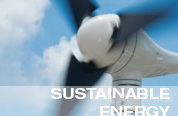


Sustainable Energy
Cogeneration
Conventional water heaters are often thermodynamically wasteful because fuel burning at temperatures greater than 2500°F produces only low-grade energy ¬– hot water at 150°F to 200°F. With systems that burn natural gas (or propane) to heat water this can mean excessive energy consumption, particularly when combined with the purchase of buying electricity from a utility.Controlled Air, Inc. can provide cogeneration units ranging in size from 30 kW to 650 kW. Applications include hospitals, schools and colleges, athletic clubs, swimming pools, hotels & motels, apartments and condos and food & beverage environments. Read more about cogeneration.
Natural Gas Conversion
Replacing fuel oil with natural gas offers the prospect of lower energy bills. Using natural gas to heat your business also decreases the level of harmful air pollution in comparison with fuel oil – and even more dramatically in comparison to coal. Controlled Air, Inc. has experience with natural gas conversions in large scale applications. Find out more about how it might be possible for your organization to switch to natural gas.
Geothermal
Geothermal energy is a renewable and reliable source of heat. Because 46 percent of solar energy is absorbed by the earth, at a depth of approximately six feet, the soil maintains a consistent average temperature of between 42-77 degrees Fahrenheit year round. Geothermal heat pumps use this natural energy to heat and cool water circulated through an underground loop. The system directs conditioned air to zones within a building. This natural energy source often eliminates the need for traditional heating and cooling. Read more about geothermal heating and cooling.
Photovoltaic
Every hour, enough sunlight reaches the earth to meet the entire planet’s energy demands for a full year. As a result, demand for solar energy has grown at about 25 percent a year for the past 15 years.Through the use of photovoltaic cells, solar energy can be converted directly into electricity. Read more about photovoltaic power.
Solar Thermal
The earth’s energy demands for an entire year could be met by the amount of sunlight reaching the surface of the earth every hour. Solar energy can be converted indirectly (thermal solar) into heat through thermal collectors, reducing, or possibly eliminating, the need for water heaters. Read more about solar thermal.
Ice Thermal Storage
Ice Thermal Storage uses tanks to store ice that can be used during peak demand periods to cool. Ice is created during the evening when electricity is at its most inexpensive and it is most efficient to generate and deliver. The ice is then melted during daytime peak periods to cool the building. Read more about ice thermal storage.
Fuel Cells
A fuel cell converts the chemical energy from fuel into electricity through a chemical reaction. Fuel cells are similar to batteries but never run out or require recharging as long as a constant source of fuel and oxygen is supplied. In addition to electricity, fuel cells produce water, heat and depending on the fuel source, very small amounts of nitrogen dioxide and other emissions. The energy efficiency of a fuel cell is generally between 40-60%, or up to 85% efficient if waste heat is captured for use. There are many different types of fuel cells, each with varying efficiency and emissions.
In the right situation and with proper installation, fuels cells can have a payback of 3-5 years. There is an investment tax credit available of 30% for qualified fuel cell property or $3,000/kW of the fuel cell nameplate capacity (i.e., expected system output), whichever is less. The equipment must be installed by Dec. 31, 2016. In addition, it features a credit of 10% for combined-heat-and-power-system property. CT Clean Energy offers additional incentives to help pay for the system. Read more about fuel cells.
©2020 Controlled Air, Inc. Branford, CT . 203-481-3531 . controlledair@controlledair.com . Lic # CT S1 302788 / RI R/M1 & P/M 00007776